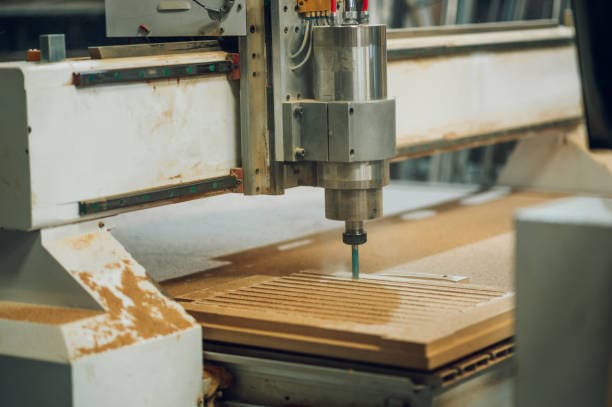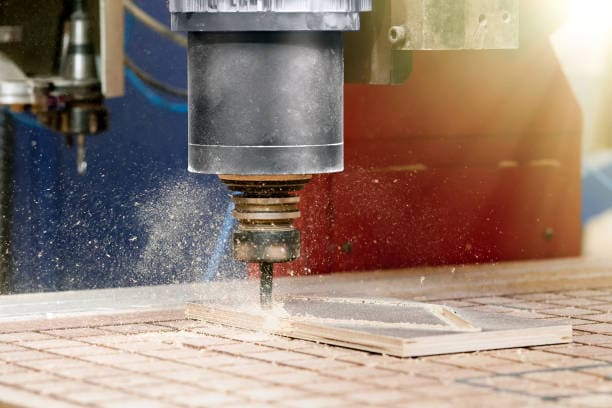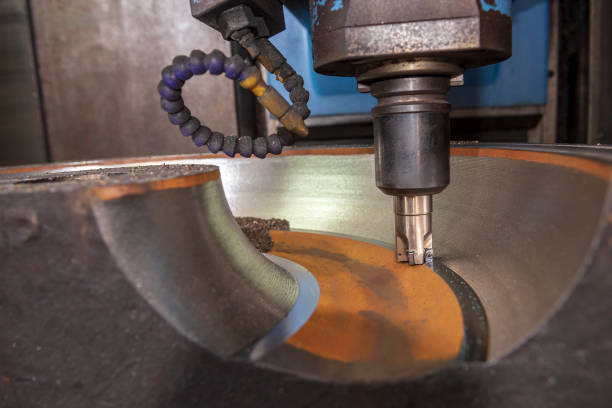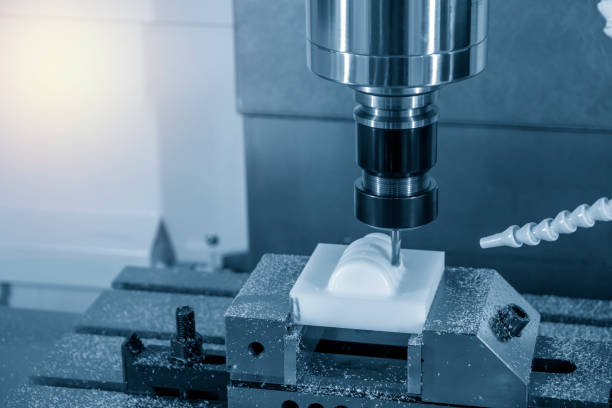Introduction
Choosing the right power supply and Pulse Width Modulation (PWM) controller for a 500W DC spindle motor can seem daunting, especially for CNC operators looking to optimize their machine’s performance. The task becomes even more crucial when you aim to control spindle speed without relying on a Variable Frequency Drive (VFD). This guide will explore the key considerations and steps for selecting the appropriate power supply and PWM controller, providing clarity on installation and usage. By the end of this article, you will be better equipped to enhance your spindle’s performance efficiently.
What Is a 500W DC Spindle CNC Motor?
A 500W DC spindle CNC motor is commonly used in a variety of machining operations. With its direct current (DC) power and 500-watt capacity, this motor is powerful enough for many hobbyist and professional CNC tasks. Unlike larger, more complex systems that require VFDs for AC motors, DC spindle motors operate without the need for a VFD, making them easier to set up and control with a PWM controller.
The Basics of DC Spindle CNC Motors
DC spindle CNC motors offer precision and reliability for a wide range of machining processes, including engraving, milling, and drilling. The 500W rating indicates the motor’s power capacity, which is often sufficient for smaller to mid-range CNC machines. The lower complexity of these motors makes them a popular choice for users seeking simple control over their CNC spindles.

Selecting the Right Power Supply for Your CNC Motor
The next key component for your spindle setup is the power supply. Choosing a power supply that can handle the electrical demands of your 500W DC spindle is essential for consistent performance and to avoid potential damage to your equipment.
Calculating Power Requirements for a 500W DC Spindle
To determine the correct power supply for your 500W CNC spindle motor, you’ll need to calculate both the voltage and current requirements. Typically, these motors run on 48V, but it’s essential to check the motor’s specifications. Using the formula P = V × I (where P is power, V is voltage, and I is current), you can calculate the necessary amperage. For example, a 500W motor running on 48V will require roughly 10.4 amps. Ensure your power supply can handle this current with a buffer for safety.
Key Features to Look for in a Power Supply Unit
When selecting a power supply, look for units with overload protection, consistent output, and adequate ventilation. Many CNC users prefer switching power supplies (SMPS) for their efficiency and reliability. Ensure the power supply’s wattage exceeds the spindle’s 500W rating to allow for smooth operation under varying loads.
The Importance of PWM Controllers in Speed Regulation
Controlling the speed of your CNC spindle without a VFD requires a PWM controller. PWM is a method used to adjust the motor’s speed by rapidly switching the motor’s power on and off. This enables fine-tuning of the spindle’s RPM without impacting its torque or stability.
How PWM Controllers Work with DC Spindle Motors
A PWM controller modulates the amount of power delivered to the motor by adjusting the duty cycle. The higher the duty cycle, the faster the spindle rotates. By using a PWM controller, you gain precise control over the spindle speed, which is crucial for achieving high-quality machining results, especially when switching between different materials.
Criteria for Choosing the Right PWM Controller
When selecting a PWM controller, ensure that it is compatible with your spindle motor’s voltage and current specifications. Look for controllers that offer smooth control over a wide range of speeds, typically from 0 RPM to the motor’s maximum capacity. Durability and ease of integration with your CNC system are also important factors.
Installation Tips for Power Supply and PWM Controller
Installing a power supply and PWM controller for your CNC motor requires careful planning to ensure optimal performance. Below are some key tips to consider during installation.
Step-by-Step Guide to Installing Your Power Supply
1. Select a Secure Location: Ensure your power supply is mounted in a well-ventilated area to prevent overheating.
2. Check Voltage Compatibility: Double-check that the power supply’s output voltage matches the requirements of your 500W DC spindle.
3. Connect the Power Cables: Use appropriate gauge wires to connect the power supply to the CNC motor, ensuring secure and clean connections.
Integrating the PWM Controller with Your CNC System
Once your power supply is set, the next step is integrating the PWM controller. The controller should be installed in a position that is easily accessible for adjustments, and wired securely to both the motor and power supply.
Combining Power Supply and PWM for Optimal Performance
The combination of a well-matched power supply and PWM controller ensures your CNC motor runs smoothly and efficiently. By carefully selecting each component, you can optimize both the speed and torque of your spindle motor, making it adaptable for different machining tasks.
Step-by-Step Guide to Connecting Your PWM Controller to the Power Supply
1. Power Off: Always start by ensuring both the power supply and CNC machine are switched off.
2. Wire the Power Supply to the PWM: Connect the positive and negative terminals of the power supply to the PWM controller’s input terminals.
3. Connect PWM Output to Motor: Wire the output of the PWM controller to the input terminals of your spindle motor, ensuring proper polarity.
Troubleshooting Common Issues
If your spindle does not respond as expected after installation, check all wiring connections for loose or incorrect setups. Ensure that the PWM controller is correctly programmed for your spindle’s voltage and current ratings. Additionally, monitor the temperature of the power supply to prevent overheating.

Conclusion
Selecting the right power supply and PWM controller for a 500W DC spindle motor is essential for maintaining efficient speed control without relying on a VFD. By understanding your spindle’s power requirements and the role of PWM in regulating speed, you can create a highly responsive and reliable CNC system. Proper installation and routine checks will ensure smooth operation and extend the lifespan of your equipment. Whether you’re upgrading your current setup or building a new system, taking the time to match the components correctly will yield long-term benefits in performance and durability.
FAQs
- What Makes a PWM Controller Preferable Over VFD for a 500W CNC Motor?
A PWM controller is preferable because it allows precise speed control without the complexity or cost of a VFD. PWM is typically easier to integrate with DC motors, making it a suitable choice for spindle motors like the 500W models. - How Do I Determine the Power Supply Needs for My 500W DC Spindle Motor?
To determine the power supply needs, calculate the voltage and current based on the motor’s power rating. For a 500W motor, this typically requires a 48V power supply capable of delivering at least 10.4 amps.

- RicoCNC has a team of professionals who have been engaged in the design, production, sales, and maintenance of electro spindles for many years. Our company accepts the purchase of various types of CNC spindles.
water-cooled CNC spindle motors
Edge banding machine spindle motors.
- If you need any CNC spindle, please contact us.

